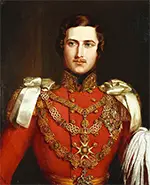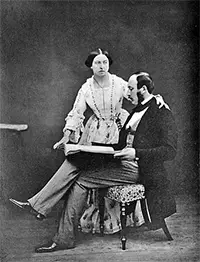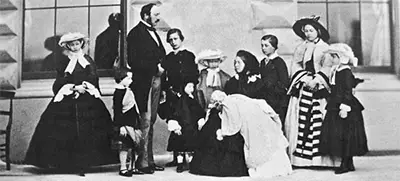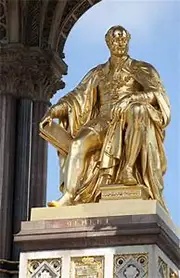Prince Albert, Husband of Queen Victoria
Prince Albert of Saxe-Coburg and Gotha was a 19th-Century German royal who was most well-known as the husband of Queen Victoria, the long-reigning United Kingdom monarch. 
He was born on Aug. 26, 1819, as Schloss Rosenau, near Coburg, in Germany. His father was Ernest III, Duke of Saxe-Coburg-Saalfeld; his mother was named Louise. The couple divorced when Albert was young. Young Albert and his older brother, Ernest, enjoyed a private at-home education and later studied in Brussels. Albert attended the University of Bonn and art history, law, and political science. He excelled at music and enjoyed fencing and horse riding. The idea of Albert's marrying the eventual Queen Victoria predated their knowing each other. Victoria's mother was Albert's aunt. King William IV wanted his heir apparent to marry Prince Alexander, of the Netherlands. Victoria met both Alexander and Albert and privately preferred Albert. When William IV died, on June 20, 1837, Victoria became queen. She and Albert met again and found that they liked each other very much. Because Victoria was the reigning monarch, it was she who had to propose marriage to Albert. She did so on Oct. 15, 1839; he accepted. They were married on Feb. 10, 1840, at the Chapel Royal at St. James's Palace. Albert was naturalized by an Act of Parliament just before the wedding. However, he found himself at odds with the British public at first, because he was from a small German state and because he did not speak English. Victoria spoke several languages, including German, and the royal couple often conversed in that language. 
They treated each other as equals. Albert often attended meetings between Victoria and her leaders of government. He often advised her on policy and pronouncements; a reformer at heart, he implored her to pay closer attention to social welfare issues and to maintain an official position of neutrality between the two main political parties of the day, the Tories and the Whigs. He even devised some war strategy, during the Crimean War. While Victoria was pregnant with her first child, in 1840, the royal couple were the target of an assassination attempt. The assailant fired two shoots at the couple while they were riding in a carriage. Neither Victoria nor Albert were hurt, and Albert gained in stature with the British people because of his coolness under fire. (It was the first of seven assassination attempts on Queen Victoria.) 
Their first child, Victoria, was born later that year. They eventually had eight more: Albert, Alice, Alfred, Helena, Louise, Arthur, Leopold, and Beatrice. Several married into royal families of Europe. Their oldest son, Albert, became King Edward VII. He was also the driving force behind the Great Exhibition of 1851, a World's Fair-like event that took place in the Crystal Palace in London's Hyde Park. Albert had had the palace built specially for the exhibition, which showcased the U.K.'s culture and industry to the world. Prince Albert was a passionate advocate of education, of not only his own family but also of others in the U.K. He set up a detailed and strict learning program for his oldest son, the Prince of Wales. He served as Chancellor of the University of Cambridge for a time, expanding the curriculum list to include modern history and natural science. He also earmarked funds taken in at the Great Exhibition for the establishment of the Natural History Museum, the Science Museum and the Imperial College London. Albert initiated the purchase of two royal residences, Osborne House on the Isle of Wight and Balmoral Castle, in Scotland. The royal family enjoyed spending time at both. 
Victoria's mother died in March 1861. The two had not been close for most of the daughter's life, but the queen still felt her mother's loss deeply. Albert took over most of the responsibilities of government at this time–this despite his continual struggle with stomach illness, which he had suffered some since August 1859, at times severely. He struggled through a handful of diplomatic crises in the next few months (including heading off war with the United States) and in early December was diagnosed with typhoid fever. He died on December 14 at Windsor Castle. Modern re-examinations of his conditions have suggested a different cause of death, such as cancer or Crohn's disease. Victoria was consumed by grief. She never appeared in public again without wearing black. The British public who had shunned Albert at the beginning of his time as royal consort showed immense sympathy for her plight and for his memory after he died. A great many things were named for him, in the U.K. and elsewhere in the world, including a lake in Africa, a city in Canada, and four regiments of the British Army. One of the most notable was the Royal Albert Hall in London. Another is the Albert Memorial in Hyde Park (left). |
|
Social Studies for Kids
copyright 2002–2025
David White



 She continued to have servants set out a set of clothes for him each day. She stayed away from public appearances at all for so long that many questioned whether she would ever return.
She continued to have servants set out a set of clothes for him each day. She stayed away from public appearances at all for so long that many questioned whether she would ever return.

